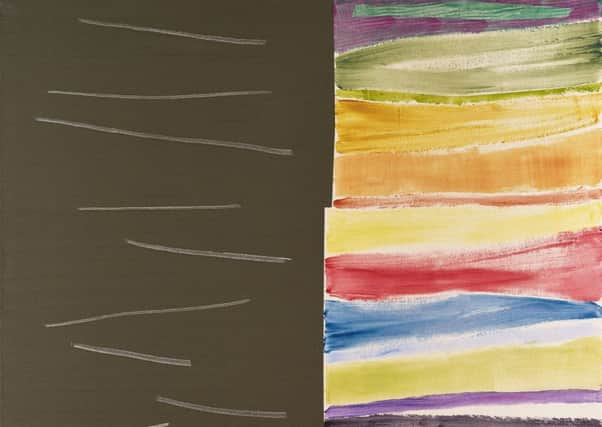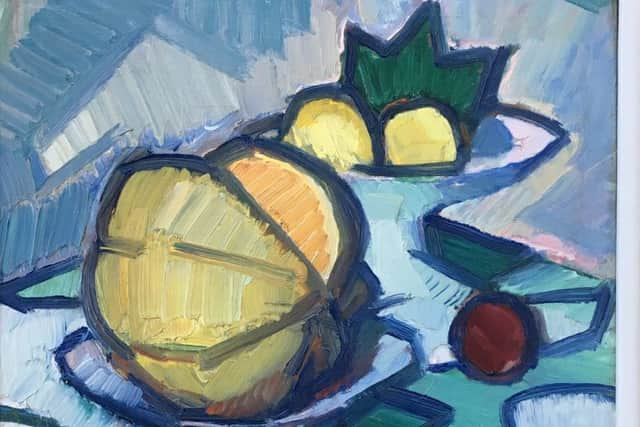Art reviews: John McLean, Fine Art Society | Still Life, Scottish Gallery


John McLean: Behind the Mirror, Fine Art Society, Edinburgh *****
Still Life, Scottish Gallery, Edinburgh ****
A Natural Selection, Scottish Gallery, Edinburgh ****


Men and women have been making art for at least 40,000 years, probably much longer, and of all the means they have deployed to make it, painting has endured as the richest in the possibilities that it offers to the artist. Largely ignoring those 40,000 years of history, the present generation, if not of artists, then certainly of curators, have favoured almost anything that calls itself art, so long as it is not painting. I note for instance and with great regret that Cathy Wilkes is representing the United Kingdom at the Venice Biennale. Enough said. There have been a good many artists who have not surrendered to such fashion, however, and have stuck to painting, even though it invariably meant being mostly ignored by the art establishment. John McLean, whose show Behind the Mirror is currently at the Fine Art Society in Edinburgh, has been foremost among those artists dedicated to painting. For nearly 60 years now he has explored the depth, the richness and the variety offered by nothing more than paint on canvas. In this he is heir to those modernists who recognised that in all the variables that that relationship offers – colour, texture, depth, weight, lightness, transparency, balance, imbalance, cutting, brushing and so much more – there is at their disposal a whole visual orchestra and it is enough. No buttress of external reference is needed. The result is what we call abstraction, incidentally a word that was first used in the context of the painter’s art and the business of seeing by Thomas Reid 250 years ago.
Advertisement
Hide AdAdvertisement
Hide AdIn his new show McLean deploys the whole vocabulary of painting with subtlety, variety and luminous effect. One device that he deploys in a good many of his pictures, in Oxter, Far Flung, for instance, and with a specially beautiful result in Intransigence, is to set a rainbow of loosely brushed bars of transparent colours against a dense, sharp-edged block of brushed neutral brown into which he has scraped calligraphic marks. These show at once the depth and density of the paint, but also the light of the canvas shines through from behind. He has even worked a little bit of sparkle into the dark paint. The colour bars are not all simple either. Some mix colour by brushing one into another. Elsewhere, as in Blessing, for instance, they are not simply brushed, but in places are raked into furrows echoing the scraped calligraphic marks. The effect is not so much a simple contrast of the solid and the transparent, the coloured and the neutral, as a marvellous, vibrant dialogue between them. The result is balance, but it is not static. It is an animated conversation of equals like a glorious exchange in the orchestra between strings and brass and woodwind. Indeed it is symphonic.
In other slightly earlier pictures like Garner and Astratto, McLean uses sharper edges, even collaging rectangular patches of painted canvas, or in Echo he uses a pumice gel to give a rough-surfaced, dense black square. The colour motifs in these pictures tend to be in ladders, circles, or rectangles. There is a slightly retrospective feel in them too. It is as though if only momentarily he is looking back on his long career as an abstract painter. The ladders of colour, for instance, are reminiscent of a form he used extensively 30 or even 40 years ago. In a remarkable picture called Stable, he not only uses this ladder form, but seems to look back even further. On the left of the picture there is a sharply defined and richly coloured ladder that rises from dark to light. Against this the right-hand side is a broad field of softly brushed brown. A small rectangle cut out from a similar colour ladder is collaged onto this and then above it is painted a heavily textured circle of blue grey. I saw an echo there of one of the very first experiments he made in free, abstract painting, a simple circle of heavy paint set in a wire mesh. It was a prophetic epitome of the way he was to use depth and balance, transparency and surface ever since. It is a reminder, too, that these pictures are not simple. They reflect a rich, poetic language that has evolved over a long period of time, but these beautiful paintings also represent a remarkable triumph over adversity. For some time now the artist has been severely disabled by illness, but his spirit is undimmed.
There is a perhaps a subliminal memory of Van Gogh in the lines of raked paint in McLean’s picture, Blessing. If so, it is appropriate. Van Gogh was a prime mover in the liberation of style that allowed paint to be itself and which eventually evolved into the kind of painterly abstraction that McLean handles with such skill. Through his sometime flatmate, Alexander Reid, Van Gogh’s painting had a champion in Scotland from an early date. Working in Paris, SJ Peploe would therefore have be disposed to be sympathetic to the Dutchman’s art when he saw it in a major exhibition there in 1901. It certainly left its mark on his art and in Still Life with Melon and Fruit,painted ten years later – currently on view at the Scottish Gallery as part of an exhibition entitled Still Life – we see again those rhythmic furrows of paint. Peploe was also looking at Cubism, however, and this picture also has a distinctly cubist composition. It was bold at the time, and if now it looks a little conservative, it nevertheless marked a stage on the road that McLean has later followed with such success.
The work in the Still Life show ranges from a rather beautiful watercolour by Peploe’s close friend and painting companion JD Fergusson, through a lovely still life of flowers by William Crosbie, another by David McClure to work by Elizabeth Blackadder and John Houston and much else.
This handsome show is also paired in the gallery with A Natural Selection – an exhibition not of paintings, but of exquisitely made objects, all of them in some way echoing the theme of still life. It includes amongst other things some remarkable images of flowers drawn by sand blasting on slate by Mary Bourne, and some extraordinarily delicate porcelain flowers created by both Hitomi Hosono and Peter Ting. - Duncan Macmillan
John McLean until 25 May; Still Life and A Natural Selection until 29 May